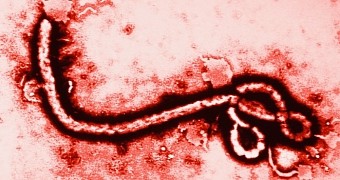This past October 20, the Centers for Disease Control and Prevention in the US announced new Ebola guidelines meant for healthcare workers employed at hospitals across the country.
The new guidelines, detailed by the Centers' Director Dr. Tom Frieden during a press conference, were rolled out not long after tests confirmed that, while looking after the US' first Ebola patient, two nurses in Dallas somehow became infected with the deadly virus.
The new Ebola guidelines
Seeing how folks can only contract Ebola by coming into contact with an infected person's bodily fluids, the new guidelines boil down to making sure that, when treating an Ebola patient, healthcare workers wear protective suits that do not leave any skin exposed.
Under the new guidelines, US healthcare workers must undergo training and learn how to properly put on protective suits before being allowed to care for an Ebola patient. They need also learn how to avoid being exposed to the virus when taking off their protective equipment.
“The greatest risk in Ebola care is the taking off of whatever a healthcare worker has on,” Dr. Tom Frieden said in a statement, as cited by Live Science. In fact, it is believed that the two nurses in Dallas got the virus when they accidentally touched their own contaminated protective suits with their skin.
Experts with the Centers for Disease Control and Prevention say that, to make sure that healthcare workers in the country are safe, it would be best if a trained supervisor were to keep an eye on them when they put on and take off their protective equipment.
Ironically enough, it appears that, due to the fact that hospitals in the US are better equipped than those in West Africa, healthcare workers in the country are faced with more potential sources of contamination. It is important that they know exactly how to handle these sources.
“What gets done in U.S. hospitals – suctioning, intubation, other things – that may not be done in Africa or the parts of the world where Ebola is spreading now,” Dr. Tom Frieden told members of the press present at yesterday's conference.
Despite the fact that the Ebola virus cannot spread through air, specialists with the Centers for Disease Control and Prevention recommend that people looking after Ebola patients wear specialized respiratory masks rather than regular facemasks.
Ebola cases thus far reported in the US
The US' first Ebola patient was 42-year-old Thomas Eric Duncan, who was diagnosed and admitted to hospital in late September and who passed away on October 8. Following his death, two of the nurses who looked after him were found to have contracted the virus as well.
The good news is that all of the people that Thomas Eric Duncan came into contact with before being isolated were cleared just a few days ago. On the other hand, the folks that the two nurses interacted with are still under observation.
Since the first Ebola cases were documented in December 2013, the virus has come to infect over 9,000 people in West Africa and kill more than 4,500. To make sure that the deadly disease will not spread to other countries, efforts are being made to screen international flights from West Africa.

 14 DAY TRIAL //
14 DAY TRIAL //